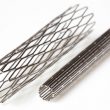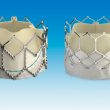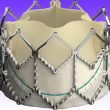We thank all the speakers of the Bolivia Sessions2017 who shared their presentations to contribute to our mission of promoting Interventional Cardiology in Latin America. See them below Agatiello, Carla: “Como iniciar un programa TAVI en Latinoamérica”. Arregui, Elizabeth: “Estenosis aórtica: candidatos para TAVI”. Bello, Fernando: “Enfermedad carotídea: Tratamiento quirúrgico”. <a href="https://solaci.org/en/2017/01/19/see-the-presentations-of-the-bolivia-sessions-2017/" title="Read more" >...</a>
Bifurcation Lesion in Distal Left Main Coronary Artery: One or Two Stents?
Courtesy of Dr. Carlos Fava. Unprotected left main coronary artery (LMCA) angioplasty has become an important trend in the last few years. One of the most significant unresolved questions about it is whether one stent is better than two in distal lesions, and how is their progress after treatment. This study included 937 patients who<a href="https://solaci.org/en/2016/11/16/bifurcation-lesion-in-distal-left-main-coronary-artery-one-or-two-stents/" title="Read more" >...</a>
SOLACI@TCT: Cases, presentations and discussions you should not miss
Complex Cinical Cases Resolved With Current Evidence Moderators: Ricardo Lluberas, Jeffrey W. Moses, Jamil Abdalla Saad [plain] SUNDAY, OCTOBER 30, 2016, 4:00 PM – 5:00 PM Walter E. Washington Convention Center Room 143B, Level 1 [/plain] This session is not CME/CNE accredited. Schedule 4:00 pm Introduction and Session Objectives Moderator: Ricardo Lluberas 4:02 pm Case 1: Primary PTCA With High<a href="https://solaci.org/en/2016/10/30/solacitct-cases-presentations-and-discussions-you-should-not-miss/" title="Read more" >...</a>
Late Mortality in TAVR Is Mainly Due to Non-Cardiac Causes
Transcatheter aortic valve replacement (TAVR) has revolutionized the management of high-risk patients with severe aortic stenosis. However, survival after the procedure and severe complications have been assessed in relatively small populations with limited follow-up. This article reports long-term clinical results in the FRANCE-2 (FRench Aortic National CoreValve and Edwards) registry. The FRANCE-2 registry<a href="https://solaci.org/en/2016/10/05/late-mortality-in-tavr-is-mainly-due-to-non-cardiac-causes/" title="Read more" >...</a>
New TAVR Devices: Better Results in Bicuspids
Courtesy of del Dr. Carlos Fava. The bicuspid aortic valve is highly anatomically challenging because of valve asymmetric calcification, increased annulus diameter, raphe calcification and ascending aorta dilation. The new valves have shown to improve results, but we still lack data on this group. 301 patients presenting bicuspid aortic valve undergoing transcatheter aortic<a href="https://solaci.org/en/2016/09/14/new-tavr-devices-better-results-in-bicuspids/" title="Read more" >...</a>
Contrast Induced FFR: Cost and Time Effective Alternative
Courtesy of Dr. Guillermo Migliaro. Fractional flow reserve (FFR) is the radio of two flows expressed as the ratio of two pressures ─ distal pressure across stenosis (Pd) to aortic pressure (pa) ─ obtained only under maximal coronary hyperemia, which is a state of drug induced maximal vasodilation. The gold standard to create<a href="https://solaci.org/en/2016/09/12/contrast-induced-ffr-cost-and-time-effective-alternative/" title="Read more" >...</a>
SAPIEN 3: Low One-Year-Mortality in High Risk or Inoperable Patients
In the first PARTNER trial (Placement of Aortic Transcatheter Valves), mortality at one year was 24% for high risk patients and 31% for inoperable patients. A recent report on SAPIEN 3 outcomes at 30 days ─ the last generation balloon expandable valve ─ showed a rather lower adverse events rate. However, additional information at longer<a href="https://solaci.org/en/2016/08/23/sapien-3-low-one-year-mortality-in-high-risk-or-inoperable-patients/" title="Read more" >...</a>
Transcatheter Mitral Valve Replacement: A New Arrow in the Bow
Original Title: Transcatheter Mitral Valve Replacement in Native Mitral Valve Disease With Severe Mitral Annular Calcification: Results From the First Multicenter Global Registry Reference: J Am Coll Cardiol Intv. 2016;9(13):1361-1371. doi:10.1016/j.jcin.2016.04.022 Gentileza del Dr. Agustín Vecchia. The risk underlying the surgical approach to mitral valve replacement in patients with severe mitral annular calcification is high. A<a href="https://solaci.org/en/2016/07/15/transcatheter-mitral-valve-replacement-a-new-arrow-in-the-bow/" title="Read more" >...</a>
Valve-in-Valve: High or Low Implantation for Better Outcomes?
Original Title: Transcatheter Replacement of Failed Bioprosthetic Valve. Large Multicenter Assessment of the Effect of Implantation Depth on Hemodynamics after Aortic Valve-in Valve. Reference: Matheus Simonato, et al. Circ. Cardiovasc. Interv 2016;9:e003651 Courtesy of Dr. Carlos Fava. At present, most patients undergoing surgical valve replacement receive a bioprosthetic valve, which lasts from 10 to<a href="https://solaci.org/en/2016/07/12/valve-in-valve-high-or-low-implantation-for-better-outcomes/" title="Read more" >...</a>
Percutaneous mitral valve replacement: First steps
Original Title: Percutaneous Transvenous Transseptal Transcatheter Valve Implantation in Failed Bioprosthetic Mitral Valves, Ring Annuloplasty, and Severe Mitral Annular Calcification. Reference: Eleid MF et al. JACC Cardiovasc Interv. 2016 Jun 13;9(11):1161-74. Courtesy of Dr. Agustín Vecchia. Transfemoral percutaneous transvenous mitral valve implantation is a promising technique and, despite the fact that no devices<a href="https://solaci.org/en/2016/06/16/percutaneous-mitral-valve-replacement-first-steps/" title="Read more" >...</a>









